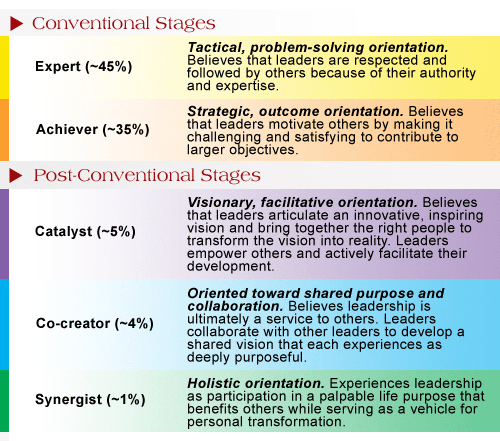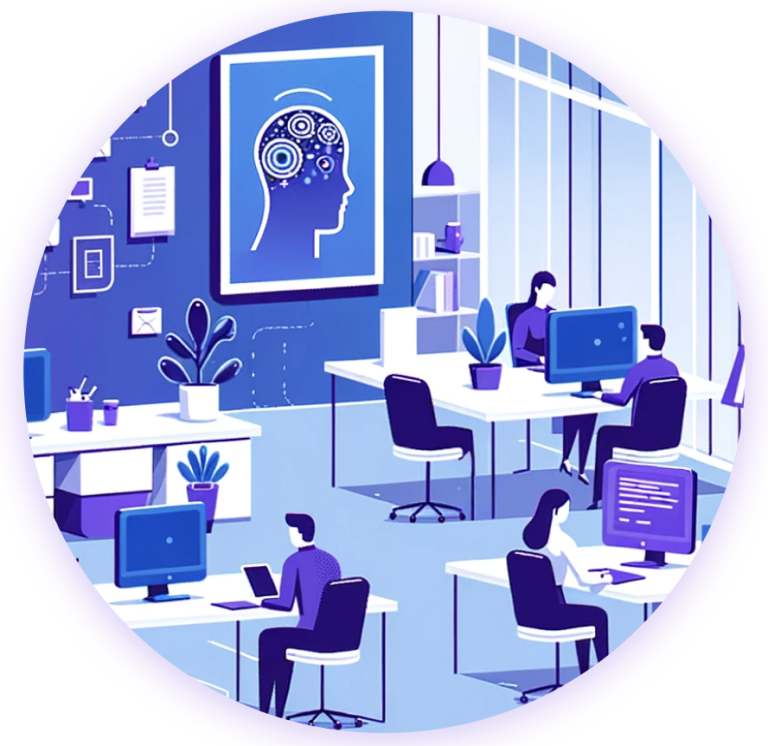What Are The 5 Levels Of Agile Leadership?
Are you wondering about the 5 levels of agile leadership? Well, you’ve come to the right place! Agile leadership is all about adapting and evolving in a fast-paced, ever-changing world. In this article, we’ll delve into the different levels of agile leadership and what it takes to excel at each stage. So, whether you’re a budding leader or simply curious about this topic, let’s dive in!
Picture this: You’re part of a team that’s constantly navigating new challenges and embracing change. At the foundational level of agile leadership, you’ll learn the ropes of managing yourself and being self-aware. It’s all about understanding your strengths, weaknesses, and emotions to maximize your personal effectiveness.
As you progress to the second level, you’ll discover the importance of collaborating with others and building strong relationships. Here, teamwork, communication, and empathy are vital skills to develop. It’s about rallying your team together and fostering a supportive and collaborative work environment.
Ready for more? Well, buckle up! The third level of agile leadership is all about leading others. This is where you step into a formal leadership role and guide your team towards success. You’ll learn how to set clear goals, delegate tasks, and inspire others to perform at their best. It’s an exciting and challenging phase of leadership growth.
So, are you excited to explore the remaining two levels of agile leadership? Stay tuned as we delve into the fourth and fifth levels, where you’ll discover how to lead agile organizations and make a lasting impact in the ever-changing business landscape. Get ready to unlock your leadership potential and embark on this agile journey with us!

Exploring the 5 Levels of Agile Leadership: Unlocking Success in Today’s Dynamic Environment
Welcome to our in-depth guide on the 5 levels of agile leadership! In today’s fast-paced and constantly evolving business landscape, agile leadership has become crucial for organizations to thrive. Agile leadership empowers teams, fosters innovation, and enables adaptability. In this guide, we will explore the five levels of agile leadership, providing you with a comprehensive understanding of each level and how it contributes to organizational success. Let’s dive in!
Level 1: Foundation of Self-Awareness
At the foundation of agile leadership is self-awareness. Leaders at this level prioritize self-reflection and introspection, understanding their strengths, weaknesses, values, and beliefs. They are in tune with their emotions, have a growth mindset, and actively seek feedback. By developing self-awareness, leaders lay a solid foundation for their agile leadership journey.
In addition, leaders at this level focus on developing emotional intelligence, empathy, and active listening skills. By honing these qualities, they create a supportive and inclusive environment that encourages open communication and collaboration. They lead by example and inspire their teams to strive for excellence.
Furthermore, leaders at level 1 understand the importance of continuous learning and personal development. They actively seek opportunities to expand their knowledge and skills, whether through reading, attending workshops, or seeking mentorship. By investing in their own growth, they become better equipped to guide their teams effectively.
Level 2: Building Effective Teams
At level 2, leaders focus on building and nurturing high-performing teams. They understand the significance of team dynamics and strive to create an environment where individuals feel valued, empowered, and motivated. Leaders at this level cultivate a safe space for open collaboration, where team members are encouraged to share ideas and insights.
Leaders at this level also emphasize the importance of clear communication and transparency. They establish shared goals and objectives, ensuring that everyone understands their role in achieving them. They provide regular feedback and recognition, fostering a culture of continuous improvement.
Furthermore, leaders at level 2 promote autonomy and trust within their teams. They delegate responsibilities and encourage decision-making at all levels, empowering team members to take ownership of their work. By building effective teams, leaders create an environment where innovation and creativity flourish.
Level 3: Enabling Organizational Alignment
Level 3 of agile leadership focuses on aligning the organization’s goals, strategies, and values with those of the teams. Leaders at this level understand the importance of clarity and consistency in driving organizational success. They communicate the vision, mission, and strategic objectives of the organization, ensuring that everyone is aligned and working towards a common purpose.
Leaders at this level facilitate cross-functional collaboration and eliminate silos within the organization. They encourage knowledge sharing, foster a culture of trust and respect, and break down barriers that hinder collaboration. By enabling organizational alignment, leaders create a cohesive and united workforce, where everyone understands their role in achieving the organization’s goals.
In addition, leaders at level 3 prioritize the development of agile practices and processes within the organization. They champion the adoption of agile methodologies such as Scrum or Kanban, promoting flexibility, adaptability, and continuous improvement. By embracing agility at an organizational level, leaders pave the way for enhanced productivity and innovation.
Level 4: Driving Organizational Change
At level 4, leaders take on the role of change agents within the organization. They understand that agility is a journey, not a destination, and actively drive change to adapt to market trends and customer demands. These leaders are comfortable with uncertainty and ambiguity, embracing challenges as opportunities for growth.
Leaders at this level empower their teams to embrace change and adopt a growth mindset. They encourage experimentation, provide resources and support, and celebrate learning from failures. They create a culture that embraces change as a catalyst for innovation and continuous improvement.
Furthermore, leaders at level 4 continually assess and adjust organizational structures and processes to align with agile principles. They prioritize flexibility, adaptability, and responsiveness, enabling the organization to navigate complex and volatile environments. By driving organizational change, leaders lay the groundwork for sustained success in a rapidly changing world.
Level 5: Fostering an Agile Ecosystem
The final level of agile leadership focuses on fostering an agile ecosystem within and beyond the organization. Leaders at this level extend their influence beyond their immediate team or department, collaborating with other leaders and stakeholders to drive organizational-wide agility. They champion a culture of continuous learning, innovation, and adaptability.
Leaders at level 5 create opportunities for knowledge sharing and collaboration across teams and departments. They establish communities of practice, organize cross-functional initiatives, and encourage networking and collaboration. By fostering an agile ecosystem, leaders enable the organization to leverage collective intelligence, leading to greater innovation and success.
Furthermore, leaders at this level champion the development of future agile leaders. They mentor and coach emerging leaders, empowering them to embrace agile practices and drive change. They encourage a culture of leadership development, where individuals at all levels are encouraged to take ownership and responsibility.
Benefits of Agile Leadership
Agile leadership offers numerous benefits for both individuals and organizations. Let’s explore some of these benefits:
Improved Employee Engagement
Agile leaders foster a sense of purpose, autonomy, and mastery among their teams. This leads to increased employee engagement, as individuals feel valued and empowered to contribute their best work.
Enhanced Innovation and Creativity
By providing a supportive and inclusive environment, agile leaders create space for innovation and creativity to flourish. They encourage new ideas, experimentation, and learning from failures, driving organizational innovation.
Adaptability to Change
Agile leaders equip their teams with the skills and mindset necessary to embrace change and navigate uncertainty. They foster resilience, enable continuous learning, and prioritize flexibility, enabling the organization to adapt to changing market conditions.
Increased Productivity
By prioritizing clear communication, transparency, and collaboration, agile leaders streamline workflows and eliminate roadblocks. This leads to increased productivity and efficiency within teams and the organization as a whole.
Enhanced Customer Satisfaction
Agile leaders understand the importance of customer-centricity. By empowering their teams to deliver value and respond to customer feedback, they ensure enhanced customer satisfaction and loyalty.
Improved Organizational Performance
Agile leadership has a direct impact on organizational performance. By fostering a culture of continuous improvement, alignment, and change readiness, agile leaders drive overall organizational success.
Conclusion
In conclusion, agile leadership is essential for organizations to thrive in today’s dynamic and complex business landscape. Through the 5 levels of agile leadership, individuals and organizations can unlock their full potential, drive innovation, and adapt to change. By developing self-awareness, building effective teams, enabling organizational alignment, driving change, and fostering an agile ecosystem, leaders can create a culture of agility that leads to sustained success. Embrace agile leadership and unlock your organization’s true potential!
Key Takeaways: What are the 5 levels of agile leadership?
- Level 1 – Individual Contributor: Focusing on personal productivity and skills improvement.
- Level 2 – Team Member: Collaborating and communicating effectively within a team.
- Level 3 – Team Leader: Guiding and empowering team members, fostering their growth.
- Level 4 – Business Leader: Aligning agile practices with organizational goals and strategies.
- Level 5 – Enterprise Leader: Scaling agile principles across the entire organization.
Frequently Asked Questions
Welcome to our FAQ section on the topic of agile leadership! Here, we’ll address some commonly asked questions about the five levels of agile leadership and how they contribute to organizational success.
1. How does agile leadership differ from traditional leadership?
Agile leadership differs from traditional leadership by focusing on adaptability, collaboration, and empowering teams. Traditional leadership often follows a top-down approach, where decisions are made by a few individuals at the top and passed down the hierarchy. On the other hand, agile leadership encourages shared decision-making, self-organizing teams, and quick responses to changing circumstances.
Agile leaders promote a culture that embraces experimentation, continuous learning, and agility to keep up with the evolving needs of customers and the market. They encourage cross-functional collaboration, transparency, and innovation to achieve business goals effectively and efficiently.
2. What are the five levels of agile leadership?
The five levels of agile leadership are as follows:
1. Level 1: Identifying Agility – Leaders at this level understand the value of agility and the need for organizational change. They begin to explore the principles and practices of agile methodologies.
2. Level 2: Supporting Agility – Leaders at this level actively support agile initiatives within their organizations. They help remove obstacles and create an environment that enables teams to embrace agility and deliver high-quality results.
3. Level 3: Championing Agility – Leaders at this level champion the agile mindset and practices throughout the organization. They promote collaboration, continuous improvement, and the adoption of agile methodologies across various teams and departments.
4. Level 4: Orchestrating Agility – Leaders at this level orchestrate the overall agility of the organization, ensuring that agile principles and practices are embedded in all aspects of the business. They guide strategic decisions, allocate resources, and facilitate the implementation of agile frameworks across the organization.
5. Level 5: Sustaining Agility – Leaders at this highest level of agile leadership ensure that agility becomes part of the organization’s DNA. They create a culture of resilience, adaptability, and continuous learning, fostering long-term success in a rapidly changing business landscape.
3. How can leaders develop agile leadership skills?
Developing agile leadership skills requires a combination of self-awareness, continuous learning, and practical experience. Here are a few ways leaders can develop their agile leadership skills:
1. Seek knowledge: Leaders can read books, attend workshops, and participate in training programs focused on agile methodologies and leadership practices.
2. Embrace feedback: Leaders should be open to feedback from their teams and colleagues. This helps them identify areas for improvement and better understand how their leadership style impacts the organization.
3. Lead by example: Agile leaders should model the behaviors and mindset they expect from their teams. By demonstrating agility, adaptability, and collaboration, leaders foster a culture of continuous improvement.
4. Encourage experimentation: Leaders should create an environment that encourages teams to experiment, learn from failures, and iterate on their ideas. This cultivates a culture of innovation and continuous learning.
4. How does agile leadership impact team performance?
Agile leadership has a significant impact on team performance. By promoting a culture of trust, collaboration, and empowerment, agile leaders create an environment where teams can thrive. Here’s how agile leadership impacts team performance:
1. Increased productivity: Agile leaders empower teams to make decisions, prioritize their work, and take ownership of their outcomes. This autonomy and trust lead to higher levels of motivation and productivity.
2. Faster decision-making: With a focus on decentralization and shared decision-making, agile leaders enable faster decision-making processes. This allows teams to respond swiftly to changing circumstances and seize opportunities.
3. Improved collaboration: Agile leaders foster a collaborative culture where cross-functional teams work together towards a common goal. This collaboration enhances communication, knowledge sharing, and the ability to tackle complex problems collectively.
4. Continuous improvement: Agile leaders encourage continuous learning and improvement through regular feedback, retrospectives, and experimentation. This mindset of continuous improvement helps teams refine their processes and deliver higher-quality results over time.
5. How does agile leadership benefit organizations?
Agile leadership brings several benefits to organizations, shaping them into more adaptive, resilient, and innovative entities. Here are some key benefits:
1. Increased agility: Agile leadership enables organizations to respond quickly to market changes and customer needs. This agility helps organizations stay ahead in a fast-paced business environment and gain a competitive edge.
2. Enhanced employee engagement: Agile leaders empower their teams, creating an environment of trust, autonomy, and psychological safety. This fosters higher levels of employee engagement, motivation, and satisfaction.
3. Improved innovation: By promoting a culture of experimentation, collaboration, and continuous learning, agile leaders nurture an environment that encourages innovation. This leads to the development of new ideas, products, and services.
4. Better customer satisfaction: Agile leadership focuses on delivering value to customers through iterative and incremental approaches. By closely involving customers throughout the development process, organizations can meet their needs more effectively, leading to higher customer satisfaction.
5. Business resilience: Agile leaders develop organizations that can quickly adapt to changing circumstances and embrace new opportunities. This resilience helps organizations navigate challenges and thrive in dynamic business environments.
Summary
Agile leadership has 5 levels that help leaders grow and adapt in their roles.
The first level is “awareness,” where leaders understand their strengths and areas for improvement.
The second level is “emergence,” where leaders actively seek feedback and embrace change.
The third level is “discernment,” where leaders make decisions based on purpose and values.
The fourth level is “adaptability,” where leaders can adjust their plans and strategies as needed.
The final level is “transformation,” where leaders create lasting impact and inspire others.
By progressing through these levels, Agile leaders can have a positive influence on their teams and organizations.


